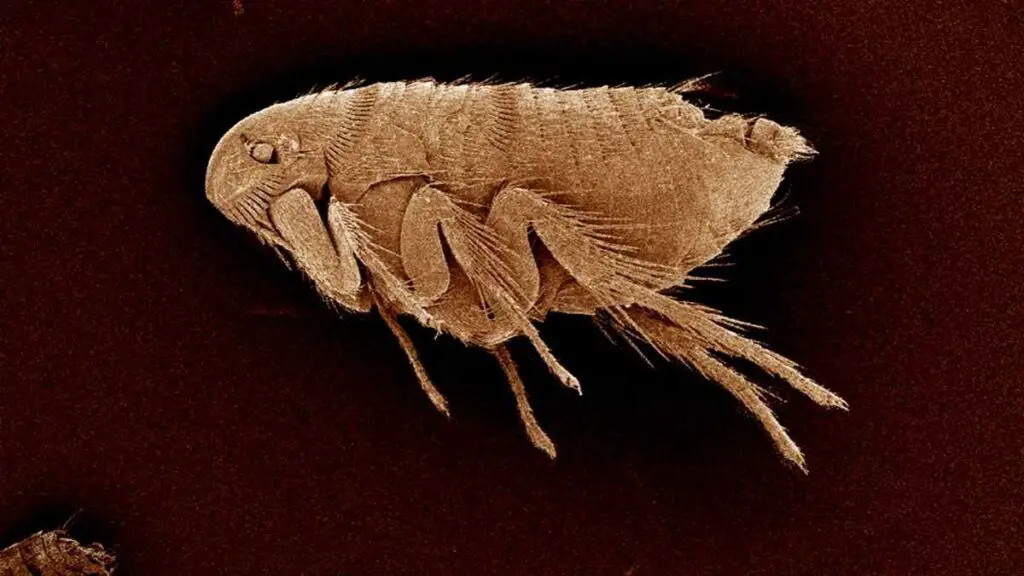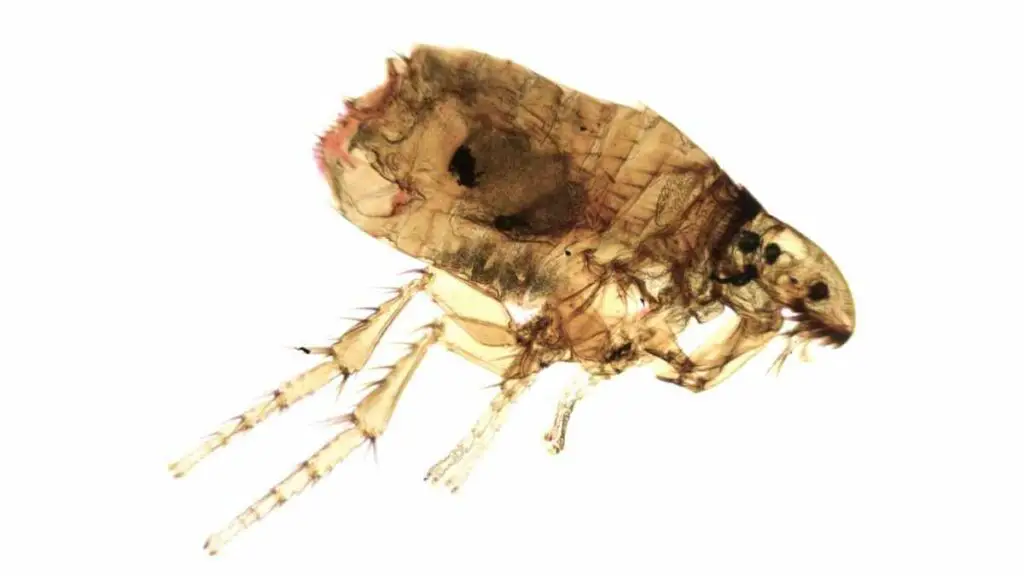Are you dealing with a flea infestation in your car? Fleas are pesky little insects that can cause a lot of discomfort and irritation to both you and your pet. Fleas can easily make their way into your vehicle and lay eggs, leading to a full-blown infestation. However, don’t worry, there are effective ways to eliminate fleas from your car and prevent them from coming back.

Understanding the life cycle of fleas is crucial to eliminate them from your car. Fleas have a complex life cycle, and they can lay up to 50 eggs per day. These eggs can hatch within a few days, leading to a full-blown infestation. Fleas can also survive for months without feeding, making it difficult to get rid of them. Identifying a flea infestation in your car is the first step towards eliminating them and preventing them from coming back.
Key Takeaways
- Understanding the life cycle of fleas is crucial to eliminate them from your car.
- Regular cleaning and maintenance of your car can help prevent flea infestations.
- Vacuuming, steam cleaning, and using flea control products are effective methods to eliminate fleas from your car.
Understanding Fleas and Their Life Cycle

Fleas are tiny, wingless insects that can cause a lot of discomfort to both humans and pets. They feed on the blood of animals and humans, and their bites can cause itching, redness, and even infections. Understanding the life cycle of fleas is crucial in eliminating them from your car.
The life cycle of fleas has four stages: egg, larvae, pupa, and adult. Flea eggs are laid by adult fleas on the host animal, but they can also fall off and land on different surfaces, including your car’s upholstery, carpets, and floor mats.
The eggs hatch into larvae, which feed on organic matter, including adult flea feces, which contain undigested blood. Larvae prefer dark, humid environments and will often hide in the cracks and crevices of your car’s interior.
After feeding for several days, larvae spin cocoons and enter the pupal stage. Pupae are resistant to most insecticides and can remain dormant for several months. They will emerge as adult fleas when they sense vibrations, heat, or carbon dioxide from a potential host.
Flea eggs, larvae, and pupae can all be present in your car, making it a breeding ground for fleas. The optimal conditions for fleas are between 70-85°F and 70 percent humidity, which are common in many cars.
To eliminate fleas from your car, you need to disrupt their life cycle by targeting all four stages. Thorough vacuuming, steam cleaning or shampooing upholstery, using flea control products, and washing removable items are effective methods for eliminating fleas from cars. It’s also important to treat your pets and their living areas to prevent reinfestations.
By understanding the life cycle of fleas and taking the necessary steps to eliminate them, you can ensure a flea-free car and a more comfortable ride for you and your pets.
Identifying a Flea Infestation in Your Car

If you suspect that you have a flea infestation in your car, there are several signs to look for. The most obvious sign is spotting the adult fleas themselves. Fleas are small, dark, and wingless insects that are visible to the naked eye. They are usually found on your car seats, floor mats, and carpeting.
Another sign of flea infestation is flea dirt. Fleas leave behind tiny, black, pepper-like droppings called “flea dirt”. You can find flea dirt on your car seats, floors, and carpeting. If you’re not sure if it’s flea dirt or not, you can place a few drops of water on it. If it turns red, then it’s flea dirt.
If you or your passengers are experiencing itching or scratching, it could be a sign of flea bites. Fleas can bite humans and pets, and their bites can cause itching, redness, and swelling. If you suspect that you have flea bites, you should consult with a healthcare professional.
It’s important to identify a flea infestation in your car as soon as possible. Fleas can quickly multiply and spread to other areas of your home or car. If left untreated, a flea infestation can be difficult and expensive to get rid of.
Preventing Flea Infestation
Flea infestations in your car can be a real headache. However, it is possible to prevent them from happening in the first place. Here are a few tips to help you prevent flea infestations in your car:
Regular Cleaning
Keeping your car clean is one of the most effective ways to prevent flea infestations. Regularly vacuuming your car’s seats, carpets, and floor mats can help remove any flea eggs or larvae that may be present. You should also clean any removable items such as seat covers, floor mats, and blankets.
Flea Treatment for Pets
Your pets are one of the primary sources of fleas in your car. To prevent flea infestations, you should regularly treat your pets with flea medication. Consult with your vet to determine the best flea treatment for your pet.
Environmental Conditions
Fleas thrive in warm and humid environments. To prevent flea infestations, try to keep your car cool and dry. Park your car in a shaded area to prevent it from getting too hot. You can also use a dehumidifier to keep the air inside your car dry.
Wildlife
Wildlife such as raccoons, squirrels, and other rodents can carry fleas. To prevent flea infestations, try to avoid parking your car near areas where wildlife is present. If you do park in these areas, be sure to check your car for any signs of fleas or other pests before driving away.
By following these tips, you can prevent flea infestations in your car and keep your car clean and pest-free.
Methods to Eliminate Fleas from Your Car

If you’re dealing with a flea infestation in your car, don’t worry, there are several methods that you can use to eliminate them. Here are some effective ways to get rid of fleas in your car:
1. Thorough Vacuuming
The first step in eliminating fleas from your car is to vacuum the entire car, including all the car seats, seat covers, seat belts, floor mats, and the car’s floors. Use a powerful vacuum cleaner to suck up all the fleas and their eggs. Pay special attention to the areas where your pet loves to sit or sleep.
2. Steam Cleaning
Steam cleaning is an effective way to kill fleas and their eggs. Use a steam cleaner to clean the upholstery, carpets, and floor mats in your car. Make sure to use hot water and soap to kill the fleas. This method is especially effective if you have a severe flea infestation in your car.
3. Flea Comb
A flea comb is a handy tool that you can use to remove fleas from your car’s upholstery and carpets. Simply run the comb through the affected areas, and the fleas will get caught in the comb’s teeth. Make sure to dispose of the fleas immediately to prevent them from jumping back onto your car.
4. Upholstery Shampooing
If vacuuming and steam cleaning are not enough to eliminate the fleas, you can try upholstery shampooing. Use a vet-approved flea control product and follow the instructions carefully. Shampoo the upholstery and carpets in your car to kill the fleas and their eggs.
In conclusion, eliminating fleas from your car requires a combination of methods, including thorough vacuuming, steam cleaning, flea combing, and upholstery shampooing. By following these methods, you can get rid of fleas in your car and prevent future infestations.
Flea Control Products and Treatments

If you’re dealing with a flea infestation in your car, there are several flea control products and treatments that you can use to eliminate the problem. Here are some options to consider:
-
Flea sprays: Flea sprays are a popular choice for eliminating fleas in cars. These sprays contain insecticides that kill adult fleas and prevent larvae from developing. You can find flea sprays at most pet stores and online retailers.
-
Flea bombs: Flea bombs are another option for getting rid of fleas in your car. These products release a fog of insecticide that penetrates all areas of the vehicle, killing fleas and their eggs. However, flea bombs can be dangerous if not used properly, so be sure to read the instructions carefully.
-
Flea shampoos: If you have pets that ride in your car, using a flea shampoo can help eliminate fleas from their fur. Be sure to choose a shampoo that is safe for your pet’s skin and follow the instructions carefully.
-
Flea collars: Flea collars are another option for controlling fleas in your car. These collars emit a pesticide that repels fleas and prevents them from biting your pet. However, flea collars can be toxic if ingested, so be sure to keep them out of reach of children and pets.
-
Topical treatments: Topical treatments are a popular choice for controlling fleas in pets. These medications are applied directly to your pet’s skin and provide long-lasting protection against fleas and other pests.
-
Insect growth regulators: Insect growth regulators (IGRs) are chemicals that prevent flea larvae from developing into adults. These products can be applied as sprays or added to your pet’s food or water.
-
Boric acid: Boric acid is a natural insecticide that can be used to kill fleas in your car. Sprinkle boric acid on your car’s carpet and upholstery, let it sit for a few hours, and then vacuum it up.
-
Salt: Salt is another natural remedy for eliminating fleas in your car. Sprinkle salt on your car’s carpet and upholstery, let it sit for a few days, and then vacuum it up.
-
Essential oils: Essential oils like clove and peppermint can be used to repel fleas from your car. Mix a few drops of the oil with water in a spray bottle and spray it on your car’s carpet and upholstery.
Remember to always follow the instructions carefully when using flea control products and treatments. If you have any concerns or questions, consult with a pest control professional or your veterinarian.
Professional Pest Control Services

If you have tried to eliminate fleas from your car but the infestation persists, it may be time to consider professional pest control services. Pest control experts have the experience and knowledge to identify the root cause of the infestation and implement effective solutions.
When searching for a pest control company, look for one that specializes in flea control. They should be licensed and insured, and have a good reputation in the industry. You can check online reviews and ask for referrals from friends and family.
Professional pest control services typically involve a thorough inspection of your car to determine the extent of the infestation. The technician will then recommend a treatment plan that may include the use of insecticides, foggers, and other products.
It’s important to follow the technician’s instructions carefully to ensure the treatment is effective. You may need to vacate your car for a period of time while the treatment is being applied, so be prepared to make alternative transportation arrangements.
After the treatment, the pest control company may provide follow-up services to ensure the fleas have been eliminated. They may also offer advice on how to prevent future infestations, such as keeping your car clean and vacuumed regularly.
Overall, professional pest control services can be a great option if you are struggling to eliminate fleas from your car. Just be sure to choose a reputable company and follow their instructions carefully to ensure the best results.
Precautions and Safety Measures

When dealing with fleas in your car, it is important to take some precautions and safety measures to protect yourself and your vehicle. Here are some tips to keep in mind:
-
Caution: Fleas can cause health problems to humans and pets. Therefore, it is important to take precautions while handling them. Wear gloves while vacuuming, washing or handling any flea-infested items.
-
Vacuum your car: Before starting any treatment, vacuum your car thoroughly to remove all the fleas and their eggs. Pay special attention to the carpets, seats, and floor mats.
-
Wash removable items: If possible, remove all the removable items from your car and wash them with hot water. This includes seat covers, floor mats, and any other fabric items.
-
Use flea control products: Use flea control products that are vet-approved and safe for your pets. Follow the instructions carefully while using them.
-
Avoid using harmful chemicals: Avoid using harmful chemicals that may damage your car or harm your health. Instead, opt for natural remedies like salt, diatomaceous earth, or essential oils.
-
Keep your car clean: To prevent future flea infestations, keep your car clean and free of clutter. Vacuum your car regularly and wash any removable items.
By following these precautions and safety measures, you can effectively eliminate fleas from your car and prevent future infestations.
Caring for Your Pet After Flea Infestation

Now that you have successfully eliminated fleas from your car, it’s important to take care of your pet to prevent another infestation. Here are some tips to help you care for your pet after a flea infestation:
Treat Your Pet
Take your pet to the veterinarian to get them checked for fleas and to receive proper treatment. Your veterinarian will recommend the best flea prevention product for your pet based on their size and weight. Make sure to follow the instructions carefully and treat your pet regularly to prevent future infestations.
Watch for Itching
Keep an eye on your pet for any signs of itching or scratching. If you notice your pet scratching excessively, it may be a sign of a new flea infestation. Check your pet’s fur regularly for fleas and flea dirt, which looks like small black specks. If you find fleas or flea dirt, treat your pet immediately.
Clean Your Home
To prevent a new flea infestation, it’s important to clean your home thoroughly. Vacuum your carpets, furniture, and floors regularly to remove any flea eggs or larvae. Wash your pet’s bedding, toys, and other items in hot water to kill any fleas or eggs. This will help prevent fleas from reinfesting your pet and your home.
Keep Your Pet Healthy
Fleas are attracted to pets with weak immune systems or poor health. Make sure your pet is eating a healthy diet and getting enough exercise. This will help keep your pet’s immune system strong and make them less attractive to fleas.
Check for Blood
Fleas feed on your pet’s blood, which can cause anemia if left untreated. Check your pet’s gums and inner eyelids for signs of pale or white coloration. If you notice any signs of anemia, take your pet to the veterinarian immediately.
By following these tips, you can help prevent another flea infestation and keep your pet healthy and happy.
Cleaning Your Home after Flea Infestation

Now that you have successfully eliminated fleas from your car, it’s time to tackle your home. Fleas can easily spread to other areas of your house, so it’s important to clean thoroughly to prevent re-infestation.
Start by washing all bedding, including your own and your pet’s. Use hot water and a high heat setting to kill any remaining fleas or eggs. You should also wash any pet bedding, toys, and other items that may have come into contact with fleas.
Next, focus on your rugs and carpets. Vacuum them thoroughly, paying extra attention to areas where your pet spends the most time. Fleas love warm and humid environments, so make sure to vacuum shaded areas as well. After vacuuming, sprinkle cedar chips on your carpets to repel any remaining fleas.
Don’t forget to sweep and dust all surfaces in your home, including baseboards and furniture. Fleas can hide in the smallest crevices, so be sure to clean thoroughly. If you have a warm and humid home, consider using a dehumidifier to make your home less hospitable to fleas.
Finally, it’s important to let in as much sunlight as possible. Fleas hate sunlight and will avoid it at all costs. Open your curtains and blinds to let in natural light and make your home less appealing to fleas.
By following these steps, you can eliminate fleas from your home and prevent re-infestation. Remember to be diligent and thorough in your cleaning to ensure that all fleas and eggs are removed.

